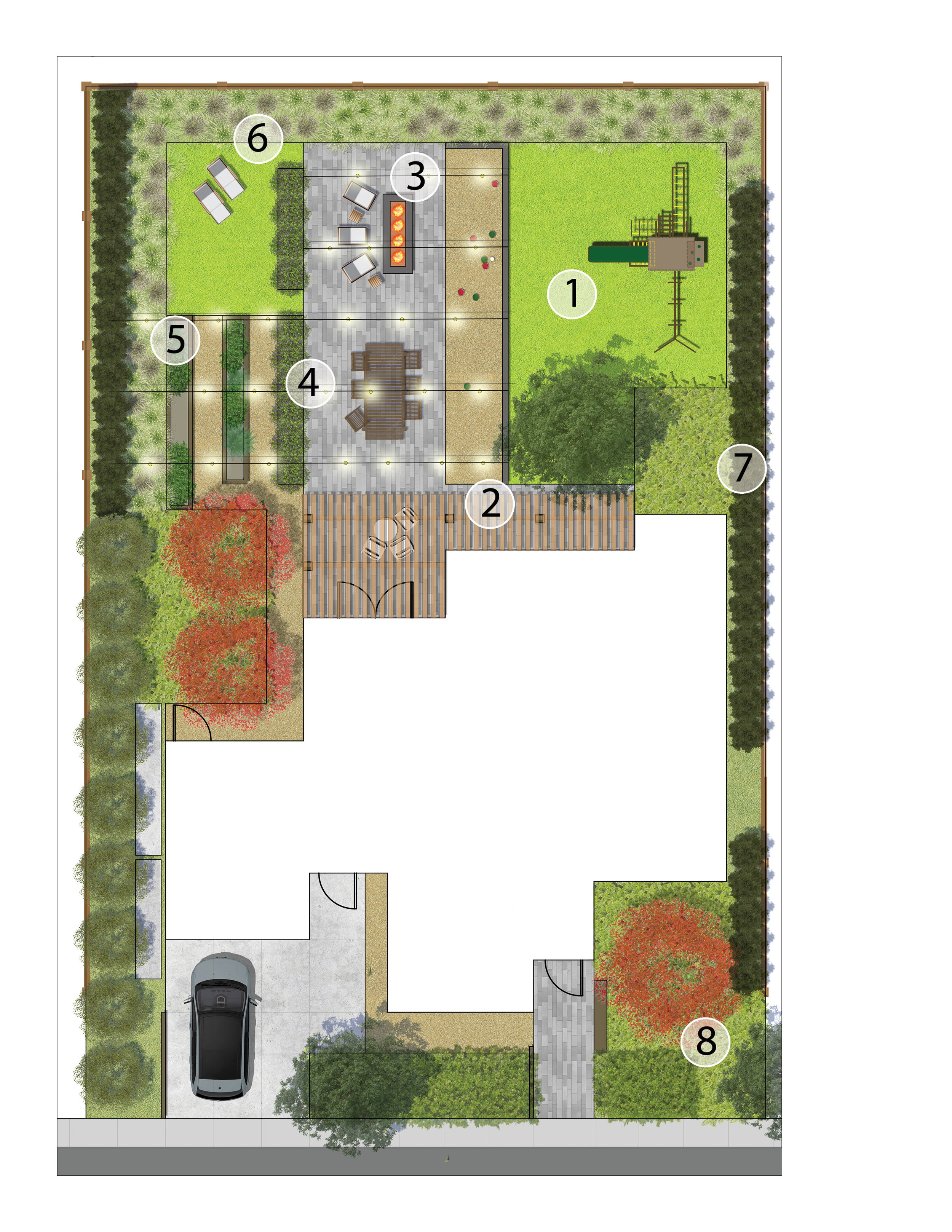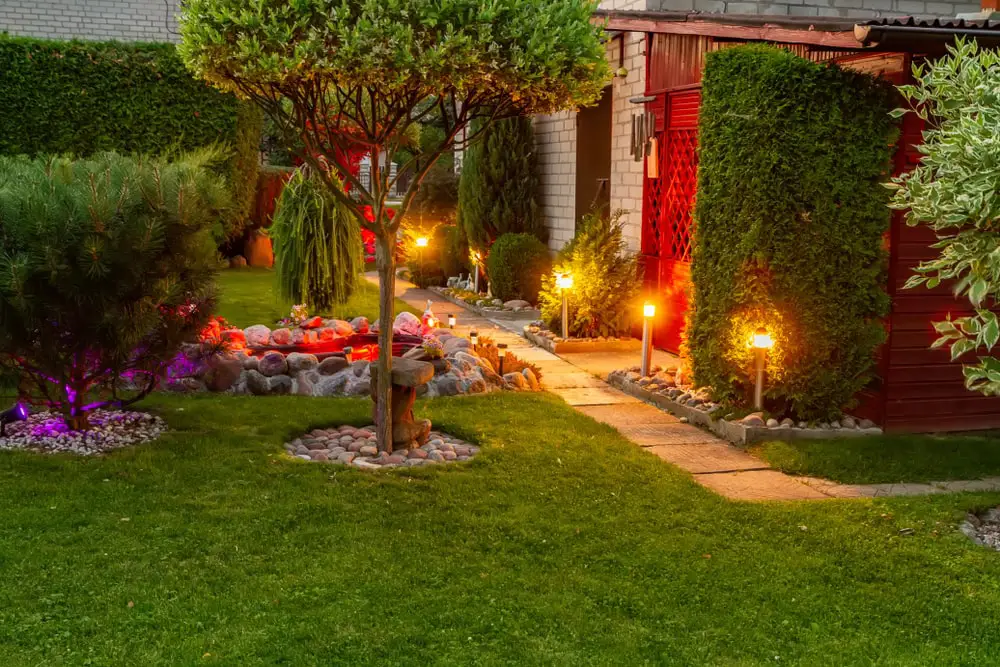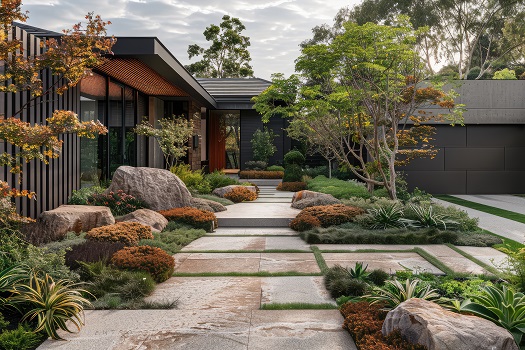Some Ideas on Hilton Head Landscapes You Should Know
Table of ContentsEverything about Hilton Head LandscapesGet This Report on Hilton Head LandscapesThe Definitive Guide for Hilton Head LandscapesLittle Known Facts About Hilton Head Landscapes.What Does Hilton Head Landscapes Mean?The Best Strategy To Use For Hilton Head LandscapesThe 2-Minute Rule for Hilton Head LandscapesThe Definitive Guide to Hilton Head Landscapes
Form compatibility is also a significant component of unity in designone or 2 noticeably various forms are excellent for contrast and focus, however generally all various other types need to have some resemblances for a merged appearance. Texture refers to just how rugged or fine the surface area of the plant or hardscape product feels and/or looks.
Instances of plants with coarse appearance consist of philodendrons, agaves, bromeliads, hollies, hands, and hydrangeas. Hardscape with coarse appearance consists of rough-cut rock, rough-finished brick, and incomplete wood with knots and an increased grain. Matured or old building and construction material that maintains a weather-beaten surface area is typically crude in texture. Features that develop fine appearance include tiny foliage; slim, strappy fallen leaves (grasses) or tall, thin stems; little, thick twigs and tiny branches; long stems (creeping plants); and tiny, delicate blossoms.
The Best Guide To Hilton Head Landscapes
The majority of plants are average texture, in that they can not be defined as having either rugged or great structure. They are characterized by medium-sized fallen leaves with simple shapes and smooth sides. The average-sized branches are not largely spaced neither commonly spaced, and the overall kind is normally rounded or mounding. Medium-textured plants function as a history to link and combine the rugged- and fine-textured plants.

To make a room really feel smaller, position the rugged structures along the outer border and the fine appearances closest to the customer. The information of the coarse texture makes the plants show up closer and makes the space really feel smaller sized. The regarded structure of plants can also change with the range from the plant.
Hilton Head Landscapes Things To Know Before You Get This
Vibrant shades boost the comparison and make the appearance show up coarser, while low-key shades can flatten structure. Hardscape with a rugged texturesuch as very harsh rocks and vibrant, big timberstends to make all plant material show up extra moderate textured. Designers typically develop a structure study (Figure 8) theoretically to help decide the arrangement of plant materials.
Color in plant product and hardscape includes passion and variety to the landscape. Color is the most conspicuous component in the landscape and is typically the focus of a lot of homeowners; nonetheless, it is also the most short-term element, normally lasting just a couple of weeks a year for private plants.
3 Easy Facts About Hilton Head Landscapes Explained
A straightforward summary of the color wheel includes the 3 key shades of red, blue, and yellow; the three second shades (a mix of 2 primaries) of eco-friendly, orange, and violet; and six tertiary colors (a mix of one nearby main and second shade), such as red-orange. Shade concept explains the relationship of shades per various other and just how they must be made use of in a structure.

Comparable (often called unified) color plans are any kind of three to 5 colors that are adjacent on the color wheel, such as red, red-orange, orange, yellow-orange, and yellow, or blue, blue-violet, and violet (landscapers hilton head island). The shades belong to each other due to the fact that they commonly consist of two key colors blended to create a second and two tertiary colors, which suggests they share usual buildings
Complementary colors are usually discovered normally in flowers; a typical pair is yellow and violet. Color is discovered in the flowers, foliage, bark, and fruit of plants.
Hilton Head Landscapes for Beginners
Environment-friendly vegetation in all its numerous shades is the dominant shade by amount, yet various other colors record attention a lot more easily due to their high contrast to the color environment-friendly. Color is additionally found in structures, rocks, pavers, wood, and furnishings. Most shades in all-natural products, such as stone and timber, are normally muted and have a tendency to be variations of brownish, tan, and pale yellow.
Colors have homes that can impact feelings, spatial understanding, light quality, equilibrium, and emphasis. Amazing shades tend to be relaxing and must be used in locations for leisure and serenity.
All about Hilton Head Landscapes
Cool colors often tend to decline and are regarded as being further away, making a space feel bigger. Color can likewise be utilized to catch focus and straight sights.
As an example, intense yellow, which has the greatest strength, likewise has a high contrast with all various other colors (typically referred to as a "pop" of shade) and ought to be conserved. A little amount of intense shade has as much aesthetic weight as a huge amount of an extra subdued or weaker shade.
Analogous (sometimes called harmonious) color design are any type of three to 5 shades that are adjacent on the color wheel, such as red, red-orange, orange, yellow-orange, and yellow, or blue, blue-violet, and violet. The shades belong per other due to the fact that they commonly consist of two primaries blended to form a secondary and two tertiary shades, which suggests they share usual residential or commercial visit this site right here properties.
6 Easy Facts About Hilton Head Landscapes Described
Complementary colors are commonly located naturally in flowers; an usual pair is yellow and violet. Shade is found in the flowers, foliage, bark, and fruit of plants.
Green vegetation in all its numerous shades is the dominant color by quantity, however other shades capture interest extra readily due to their high comparison to the shade eco-friendly - hilton head landscapers - https://www.dreamstime.com/stevenagonzales6_info. Shade is also located in structures, rocks, pavers, wood, and furniture. Many shades in all-natural materials, such as rock and wood, are usually low-key and have a tendency to be variations of brown, tan, and light yellow
The Hilton Head Landscapes Diaries
Shade is an essential component for producing rate of interest and variety in the landscape. Shades have buildings that can affect emotions, spatial perception, light high quality, equilibrium, and focus. One residential or commercial property of shade is described relative to temperaturecolors appear to be great or cozy and can impact feelings or feelings. Great shades tend to be relaxing and should be used in locations for leisure and calmness.
The "temperature level" of shades can also impact the understanding of distance. Trendy colors have a tendency to recede and are regarded as being farther away, making a room feel bigger. Cozy colors tend to development and are viewed as being better, making a room really feel smaller. Color can additionally be made use of to record interest and direct sights.
For example, bright yellow, which has the highest possible strength, likewise has a high comparison with all various other shades (typically explained as a "pop" of shade) and should be used moderately. A tiny quantity of intense color has as much aesthetic weight as a huge quantity of a more controlled or weaker shade.